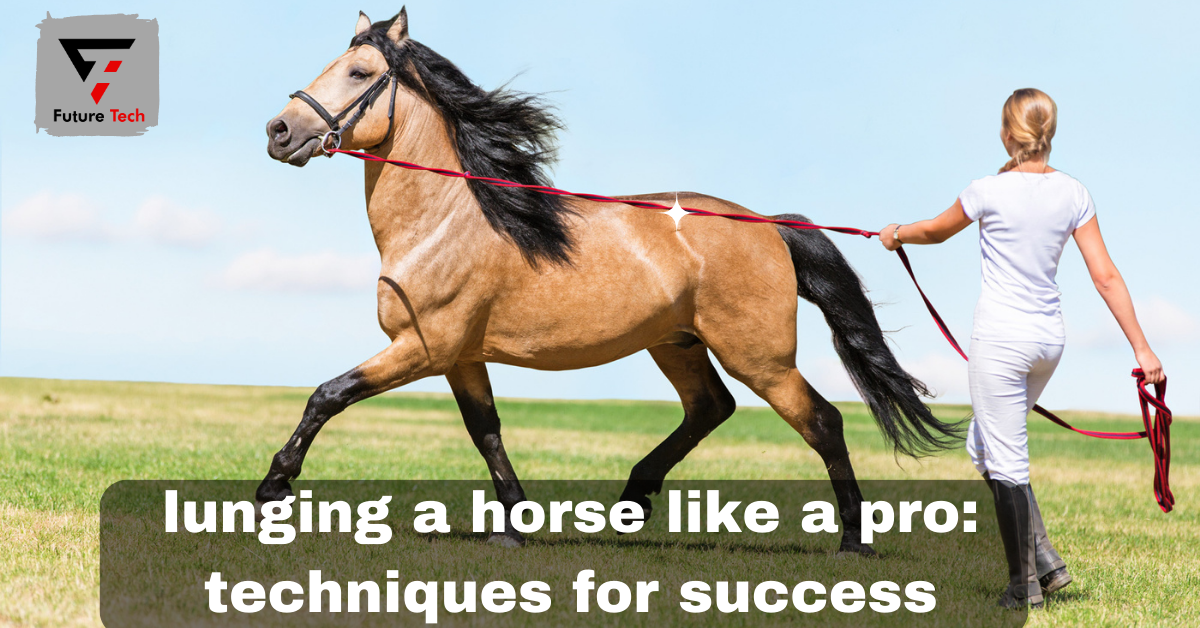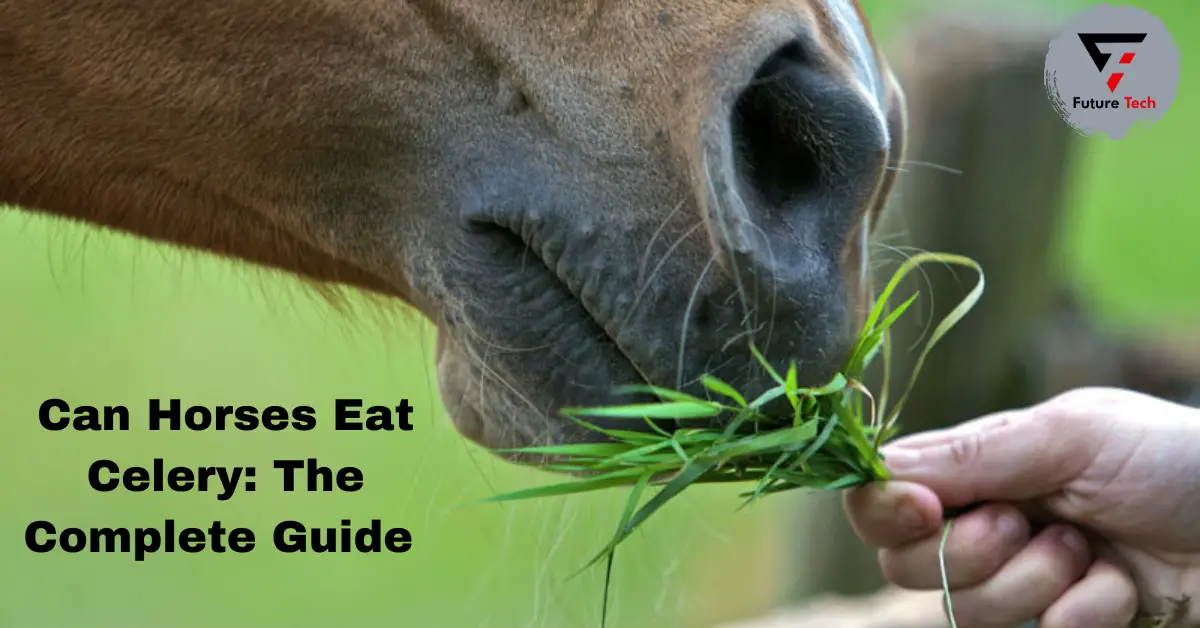Lunging a horse is an essential practice in equine care and training, offering numerous benefits for both the horse and the handler. This technique involves leading the horse in a circular path around the handler while the horse is equipped with a lunge line and often a bridle or halter. It is a versatile horse development, conditioning, and behavior modification tool.
In this introduction, we will explore the art of lunging, which allows the horse to stretch, warm up, and exercise its muscles. It is beneficial for improving a horse’s balance, obedience, and command responsiveness. Lunging can be a valuable training method for teaching a horse various cues and commands while also assessing the animal’s movement, soundness, and overall well-being. Whether you are a seasoned equestrian or a beginner in horse care, understanding the fundamentals of lunging is essential for the horse’s physical fitness, mental stimulation, and developing a harmonious partnership between horse and handler.
How to Make Your First Lunge of a Horse
Lunging is a horse training technique in which you use your body language and voice to guide your horse around you in a circle on a 20-meter rope called a lunge line. When done correctly, it is an activity that helps your horse and you both. In addition to being a great way to give your horse exercise, lunging fosters mutual respect and trust between horse and rider. Many equestrians favor thrusting as a practical approach to address behavioral issues in horses. It becomes precious when your horse exhibits behaviors like bucking or bolting. You can apply this method to calm down an excessively energetic young horse or, conversely, to prepare the muscles of an older horse that may be experiencing stiffness before a ride.
Horse lunging techniques
Get Ready to Jump Off Your Horse
Choose a roomy, tidy, peaceful area for your horse’s lunge. Ideally, a fenced-in area large enough for you to form a circle around at least thirty meters in diameter. Ensure there are no potential hazards for your horse or yourself, and remove any debris that could cause a stumble. If you’re new to lunging a horse, select a location free from distractions caused by other horses, riders, or vehicles to ensure a focused and safe environment.
Starting the lunge in a counterclockwise circle is usually straightforward, as most horses are familiar with people positioning themselves on their left side.
To prevent your horse from tripping over the lunge line, grip it firmly in your left hand while using your right hand to keep the whip directed downward. Your horse will go on his way if you ask him to “walk” as you stand at his shoulder and cluck gently.
Release the line gradually as the horse advances, not letting it grow slack. To encourage the horse to move independently, approach from behind and demonstrate the proper use of the whip. Extend the lunge line fully and ensure it’s not coiled in your hand as the horse moves away from you. This allows the horse to walk in a 20-metre circuit around you. This enables the horse to walk in a 20-metre course around you. Encourage your horse to maintain forward movement with a cluck, and if IT halts or attempts to change direction, employ the whip as a gentle reminder.
Equine Training
Your lunge line will serve as the reins’ intended function as a directional aid once your horse is circling you in a 20-metre circle, and your whip will act as a stand-in for your legs to propel the horse forward as if you were riding. Position yourself in a V-shape, with yourself at the point, your horse between your whip and your lunge line; direct the lash towards the horse’s haunches. The lunge line should join at the horse’s mouth. Staying just behind the horse, you should be facing its flank. Keep yourself in the circle and let your horse go around you.
Start with a vigorous stroll.
To prevent damage, warm up your horse for five to ten minutes at the trot before beginning any intense exercise. To initiate lunging, your horse requires a 20-meter lunge line, boots, gloves, a lunge whip, and a halter. Place your equine into the designated space for the lunge and fasten the lunge line to the horse’s halter’s lower ring. Using your left hand, make large loops for the lunge line. It would help if you never let the lunge line wrap around any area of your body. If your horse pulls on the line, your gloves will shield your hands from rope burn.
Trot
Ask the horse to “trot” and show him the whip to get him from a walk to a trot. Never strike your horse with the whip, and avoid constantly cracking it since this can make the animal reactive. It would help if you practiced stopping and changing from walking to trotting as soon as your horse can. Say “whoa” and request a “walk” from your horse while remaining composed and quiet. Give the lunge line a little pull to bring your horse to a stop and signal him to stop. You can canter your horse by lifting your whip and yelling, “Canter!” after you have him under control at a walk and trot. Once you’ve finished lunging, request your horse to “halt,” then approach while neatly coiling the rope into large loops.
Refrain from urging your equine companion to get closer or alter his course while in the saddle. To prevent stress and damage, it is recommended to lunge your horse for the same length in both directions for up to forty minutes. Once you understand lunging your horse, you can instruct it to change from any gait, including walk, trot, canter, and stop. To avoid damage, try not to lunge your horse for more than thirty to forty minutes at a time. It would help if you always ended on a good note, with your horse obeying your orders.
Rounds. Every circle
Let’s start with the obvious. Lunging horses twirl about on an extended lead rope.
The majority of those lead ropes are around thirty feet long. It would be equivalent to a person circling a circle that is roughly ten feet in diameter. See how it feels after giving it a try for a bit. The answer is as follows: if you are walking to the left, you will have soreness in about five minutes on both the inner of your right foot and the outside of your left foot. You will eventually acquire painful knees if you continue.
To show how it works, toss in a buck and a rear as someone tugs on your head. You probably get the point. It is excruciating for the joints to lunge. Adding airs above the groundwork and completing the gallop while bending at a 45-degree angle to the ground makes it much more taxing on the joints when your horse is crazy. It’s easy to understand how it may be difficult for them to run about on those sticks. One unbalanced foot, and you have a specific formula for trouble—unabashed advertising for my travel blogs. I speak about it a lot since it’s a highly significant issue.
Alternatives to circles
Ah, I see. When those insane horses realize the world is a dangerous place, I’ve seen what happens. When they’re like that, I wouldn’t want to ride them! Before taming the wild beast, now is an excellent opportunity to weigh your alternatives. I always hear trainers stress the value of transitions. One excellent technique to keep your horse’s mind working is to ask them to walk, trot, walk, canter a few feet, walk, and walk while on the lunge line.
Before the horse show, teach them this. While your horse gallops around you, don’t simply stand there. Turn around. Consequently, the circle will expand, reducing stress on your horse’s joints. If your equine exhibits extreme behavior during competitions, consider training them to lunge while wearing side reins. You will have far more control as a result of this. Your horse may work on pouncing rather than running in circles if you use a surcingle and side reins.
Guide to Lunge
Enter the arena or round pen with your horse in a halter and lunge line, then stop them where you want them to begin the circle. After that, you go to the circle’s center. Hold your lunge whip in your left hand and the lunge line in your right if your horse moves clockwise. As you change directions, you will also change hands.
While grasping the line and whip, picture yourself at the top of a triangle, with your horse at the base, the whip descending one side, and the bar down the other. Always maintain your lunge whip behind the horse’s midline to urge your horse to go forward.
Saying “walk on” or “walk” to your horse can encourage him to advance. You may promote them with the whip if they wait to proceed. Make sure your horse stays in the same circle as it goes around. After you are proficient in walking and circling, consider including the up and down transitions. Ask your horse to change from their present gait upward using the same method as the walk. For your horse, up-and-down transitions are an excellent method of increasing muscle and endurance.
Lower your whip and ask for the lower gait while speaking softly and carefully throughout downhill transitions. Your horse must stop and wait for you to approach when you call for a halt. It lessens the chance of tangles in the lunge line. Depending on their other activities, most horses can lunge for approximately thirty minutes up to four times a week.
Conclusion
In conclusion, lunging a horse is a fundamental and versatile practice in equine care and training. This technique offers many benefits for both horses and handlers, contributing to their physical and mental well-being. Lunging allows horses to stretch, warm up, and exercise their muscles, promoting fitness and balance. Moreover, it is a valuable tool for addressing behavioral issues, fostering obedience, and enhancing a horse’s responsiveness to commands.
Lunging also provides an opportunity to assess the horse’s movement, soundness, and overall health, making it an essential practice for equestrians of all levels. When conducting the first lunge of a horse, choosing the right location, maintaining control of the lunge line and whip, and performing transitions are crucial. By following these guidelines, handlers can ensure safe and productive lunging sessions.
It’s important to note that lunging should be incorporated as part of a balanced training routine, typically lasting up to thirty minutes, up to four times a week, depending on the horse’s other activities. Ending each session on a positive note contributes to a harmonious partnership between horse and handler, fostering trust and respect.




